Blue whales have 'rediscovered' South Georgia
- Published
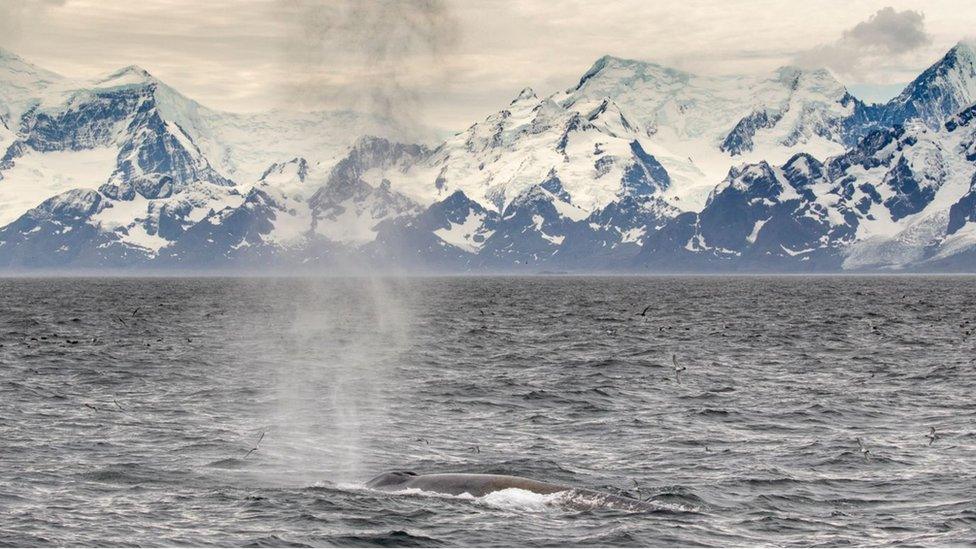
An Antarctic blue whale surfaces off South Georgia
The resurgence of blue whales around the island of South Georgia is real and has probably been under way for a little while now, say scientists.
When a survey was conducted at the British Overseas Territory earlier this year, 58 of the animals were seen.
That was described as "astonishing" at the time because there had been so few sightings previously.
But a reassessment of 30 years of observational data suggests this bumper crowd of blues was no anomaly.
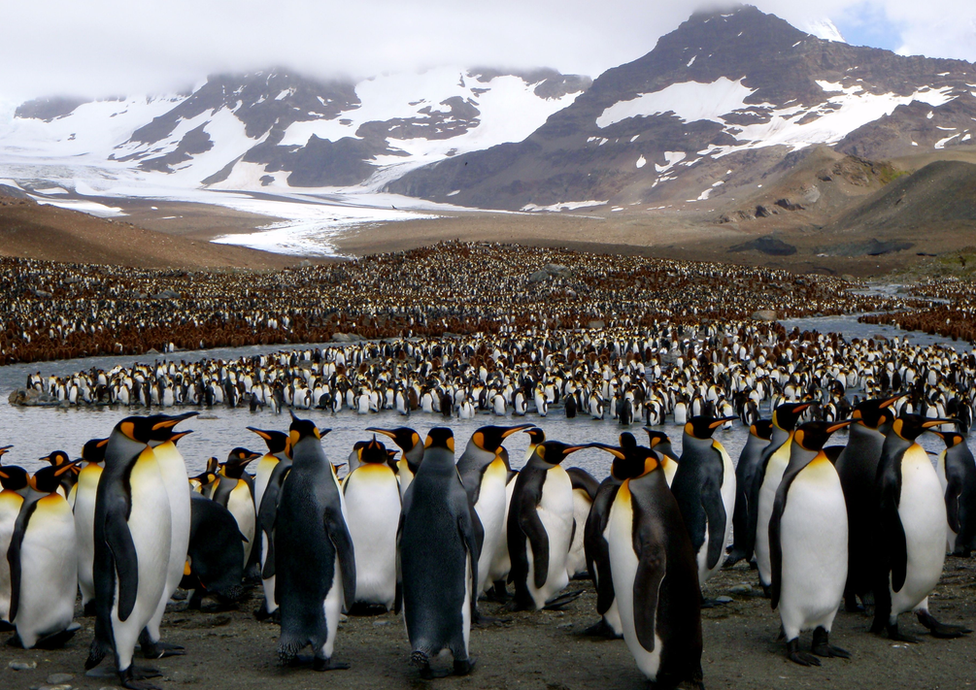
South Georgia is home to millions of king penguins
It most likely signals they really are making a comeback in the waters around the sub-Antarctic island.
South Georgia is infamous, of course, for being the epicentre of commercial whaling in the early 20th Century.
Jennifer Jackson: "I don't think this is a surprise phenomenon"
Its steam boats, with their grenade-tipped harpoons, decimated all the large whale populations - and at the peak of the carnage were removing 3,000 blues a year.
And while fur and elephant seals, which were also heavily exploited, managed to bounce back to historic levels relatively quickly - the whales, and the blues in particular, did not.
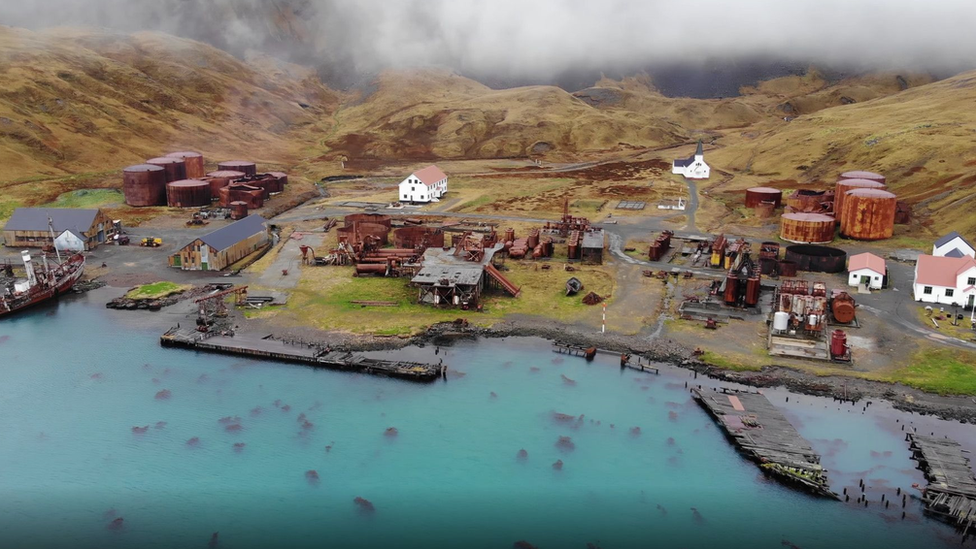
Grytviken: Remnants of the old whaling stations can still be seen today
Their absence long after commercial whaling ended even led some whale experts to wonder if these majestic creatures would ever be seen again in significant numbers at South Georgia.
"It was held up as an example of how you can exploit a population beyond the point where it can recover," Susannah Calderan, who led the reassessment, told BBC News.
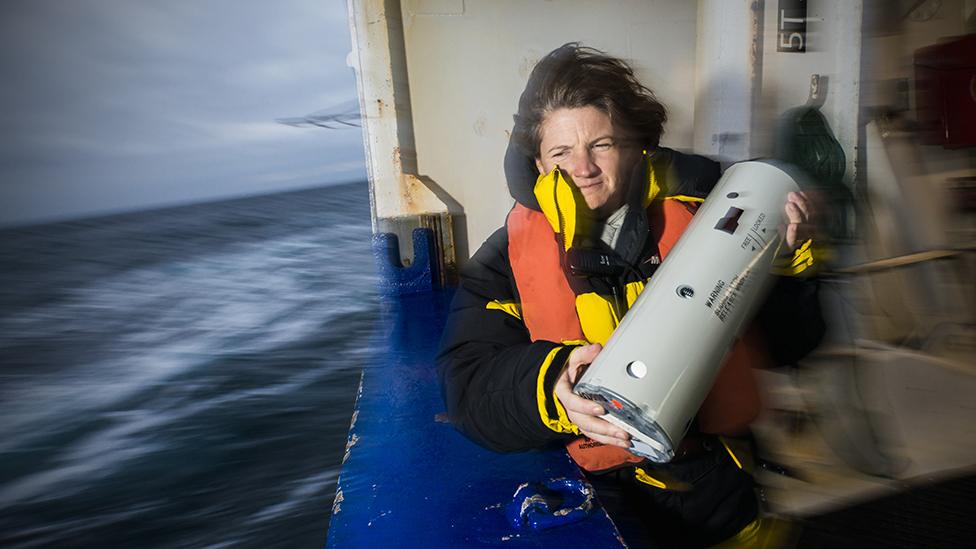
Susannah Calderan uses ex-military sonobuoys to pick up the sounds of whales
It's possible that as the population crashed, the blues simply lost the cultural memory that had drawn them to South Georgia in the first place, the Scottish Association for Marine Science (SAMS) fellow said.
The British Overseas Territory is in the path of a food train coming up from the Antarctic on strong currents. This train carries abundant krill, the small crustaceans that whales love.
But because there were so few blues left after commercial whaling, it may be that the knowledge of the island's productive feeding ground could not be passed on to future generations - so the theory goes.
"So, perhaps now they have re-discovered 'the larder'," Susannah Calderan speculated. "South Georgia remains an extremely productive feeding ground. Nothing ever happened to its productivity. It's not as if the whales stopped coming because there was nothing left to eat."
Male blues communicate over vast distances with their repetitive, low-frequency calls (B.Miller/AAD)
The SAMS scientist, with colleagues, has reviewed all the observational data on blue whales at South Georgia going back three decades.
This includes the systematic surveys that have been conducted by researchers and the opportunistic reporting that's come in from mariners and from cruise ships, whose visits to South Georgia have increased in frequency.
The study also includes data from acoustics - the use of listening devices, such as sonobuoys, which are put in the water to detect the booming, low-frequency calls that are made by blue whales.
So-called D-calls made by blue whales are probably associated with social behaviour and feeding (B.Miller/AAD)
All this information points to a gradual increase in the presence of blue whale numbers around the island in recent years.
Even before the remarkable observation of 58 blues in February, it's now recognised that a total of 41 animals from the species were photo-identified off South Georgia between 2011 and 2020.
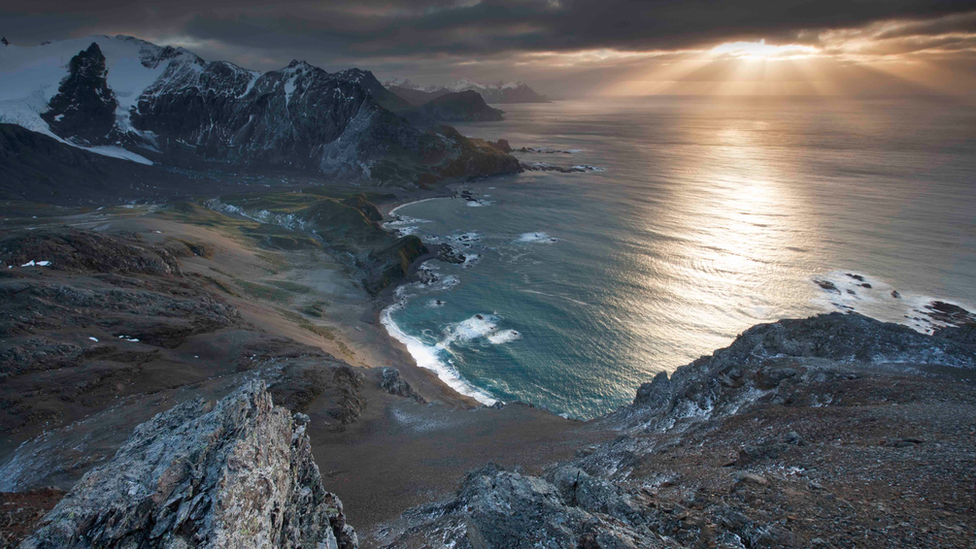
Conservationists say South Georgia is an all-too-rare example of an ecosystem in recovery
"It should be said, the survey we carried out at the beginning of this year was not dedicated to blues. This was an accidental finding. We were actually looking for right whales, but the team saw blue whales when they were doing their transects," explained co-researcher Jennifer Jackson from the British Antarctic Survey, which led the February expedition.
"I don't think this is a surprise phenomenon. I think we're going to continue seeing blue whales in the years to come. What we need to understand now is why they are using South Georgia waters again."
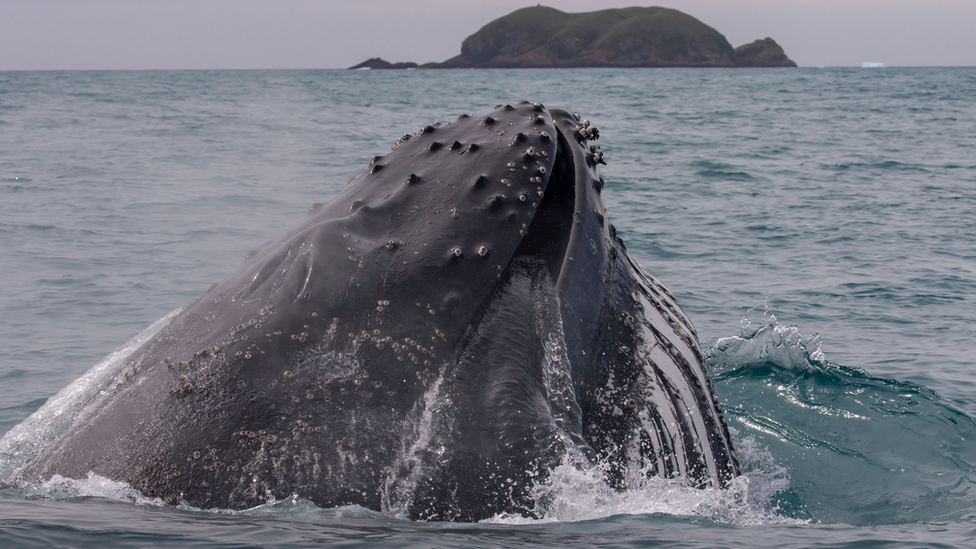
A humpback whale in the waters around South Georgia
And it's not just blues. Those other species that were also driven to the brink, like the humpbacks, are also on the rise.
Susannah Calderan would like to see a network of acoustic moorings placed around the island, in particular off its southwest coastline where little systematic survey work has been conducted.
This would help fill gaps in the data and smooth biases which mean the same locations tend to dominate sightings - such as the popular routes taken by cruise ships.
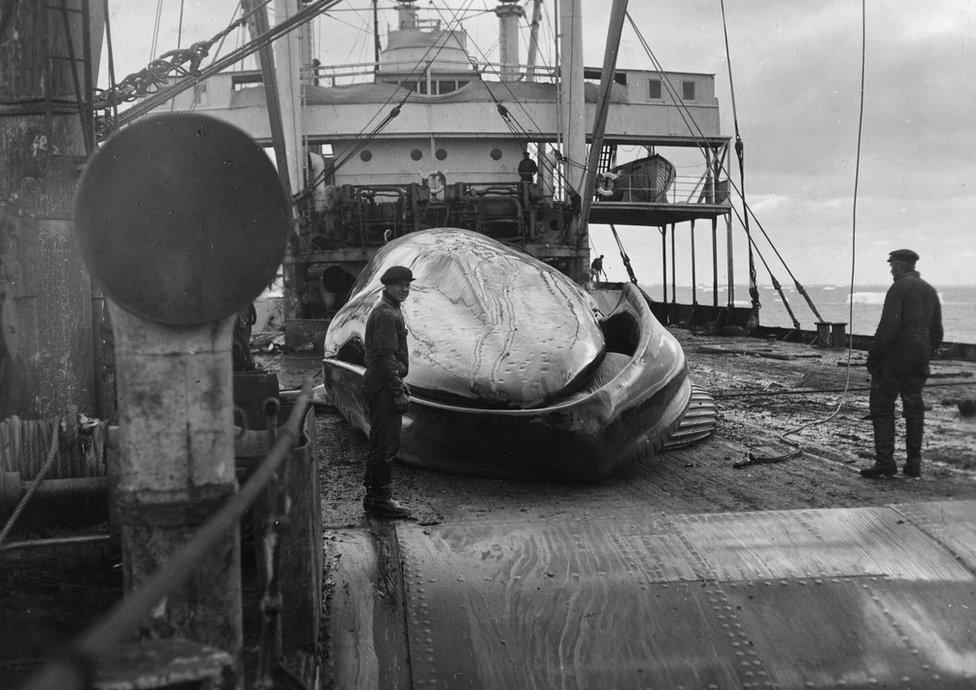
At the peak of harvesting, 3,000 blue whales were being taken each year
The whale scientists are also now watching closely what will happen with the world's biggest iceberg - the 4,200 sq km tabular block known as A68a.
Drifting in the same currents that deliver krill to South Georgia, it risks being caught in the shallows surrounding the island. If that happens, the iceberg could disrupt the foraging behaviour of many animals that depend on the krill.
"South Georgia is a kind of home to dead icebergs. Generally, they tend to go there to die. But, yes, this one's massive," said Susannah Calderan.
"Will it affect productivity? Will it affect the krill? Will that affect the whales? It's a really interesting question."
The team's analysis, which is published in the journal Endangered Species Research, external, was funded by South Georgia Heritage Trust and Friends of South Georgia Island.

The giant iceberg A68a could become stuck in shallow water near the island